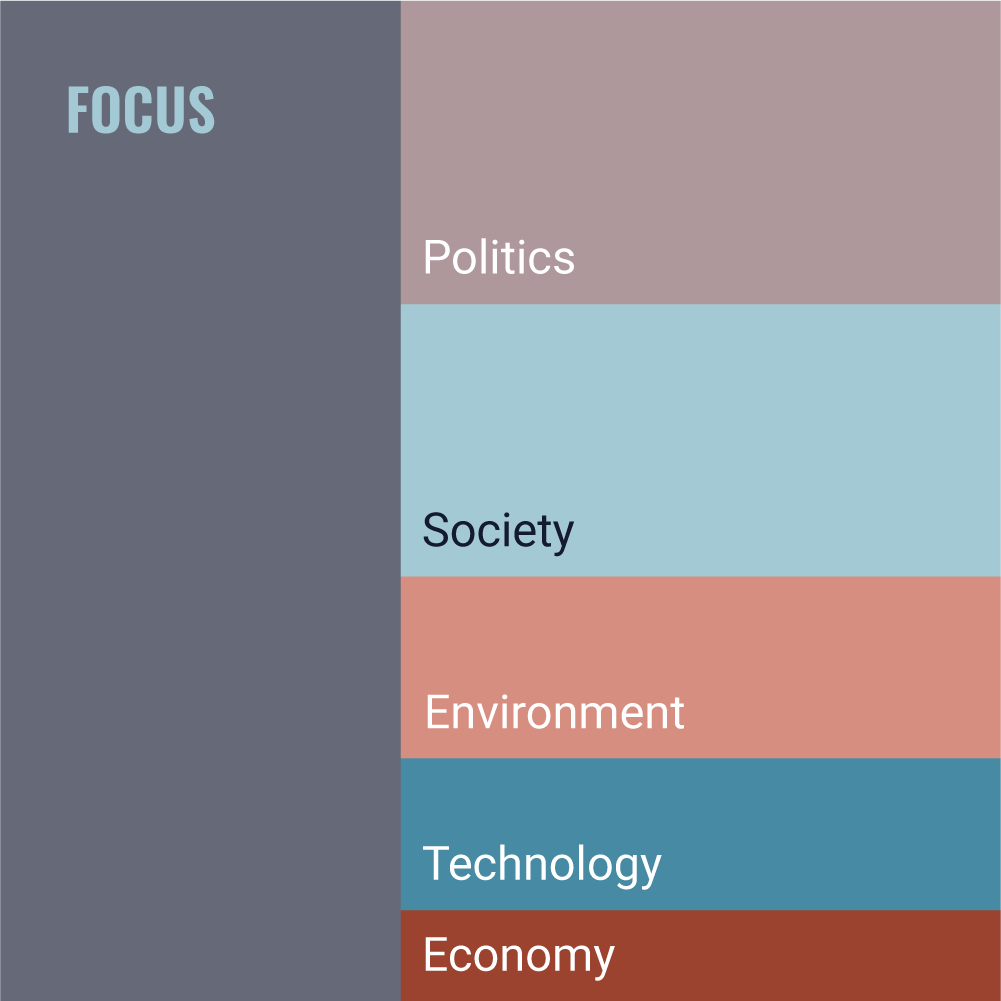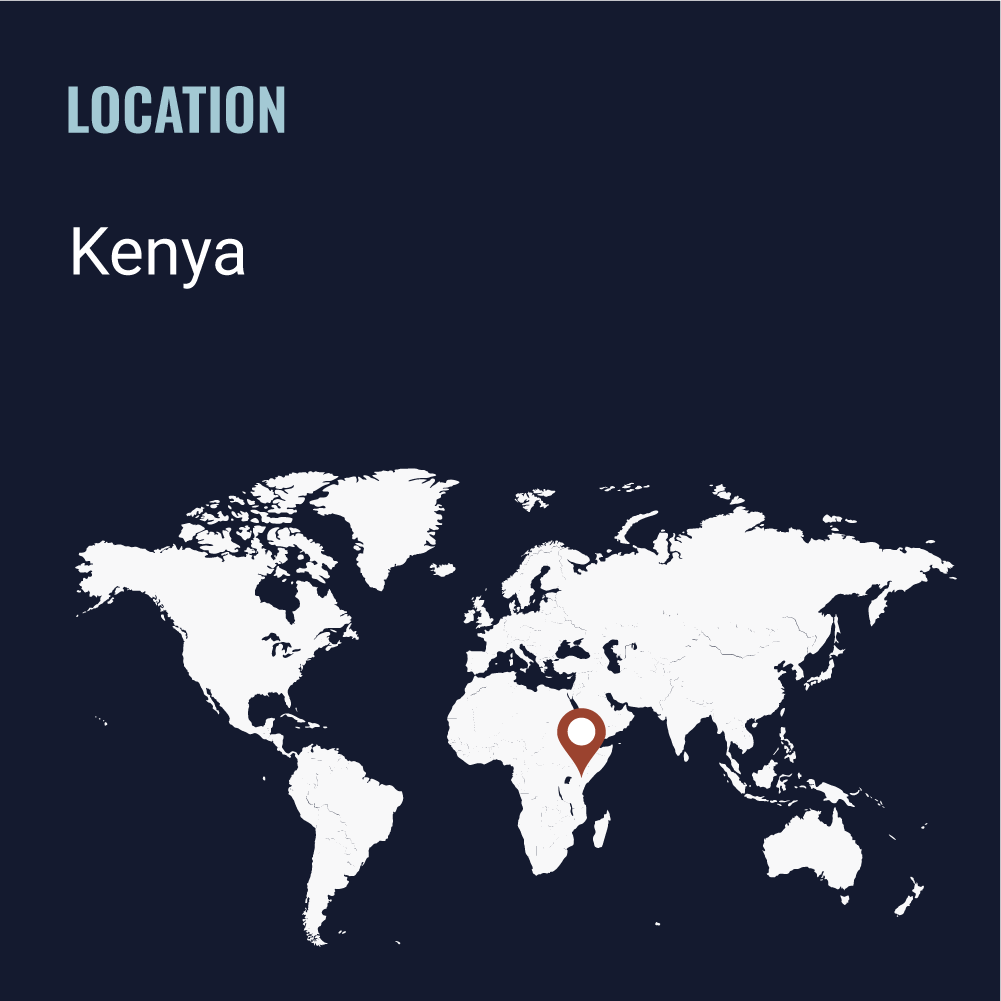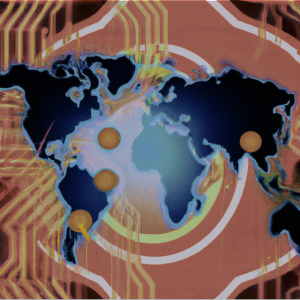
Imagine: What if we had digital nations untethered to geography?
How do low income countries affected by climate change imagine their futures? How do they overcome these twin challenges? Will all nations eventually choose or be forced to go digital?
As the name suggests, this world is a deep dive into virtual communities. It explores how people might find belonging and representation on the global stage through digital nations that aren’t tied to any physical location. This world also features a fascinating and imaginative kind of artificial intelligence that they call ‘digital persons’. These are inspired by biological brains and have a rich internal psychology. Rather than being trained on data, they’re considered to be raised in digital nurseries. They have a nuanced but mostly loving relationship with humanity, with some even going on to found their own digital nations for us to join.
How to Navigate this Worldbuild?
Hear about the ideas of this world and the challenges of creating it in our brand new podcast series.
See how this world transforms from now to 2045, year by year on the interactive timeline. Each year had to include two events and one data point.
With the help of two short stories, experience what it’s like to live in this world for a day.
To understand how the world is constructed, read through the creators answers to 13 detailed questions about the make up of their world.
Discover the media piece the team created about their world.
Jump here to meet the team behind this imagined world.
Podcast
Conrad Whitaker and Tracey Kamande join Guillaume Reisen on ‘Imagine a World’ to talk about their worldbuild, ‘Digital Nations’, which they created with their teammate, Dexter Findley. All three worldbuilders were based in Kenya while crafting their entry, though Dexter has just recently moved to the UK. Conrad is a Nairobi-based startup advisor and entrepreneur, Dexter works in humanitarian aid, and Tracey is the Co-founder of FunKe Science, a platform that promotes interactive learning of science among school children.
Timeline
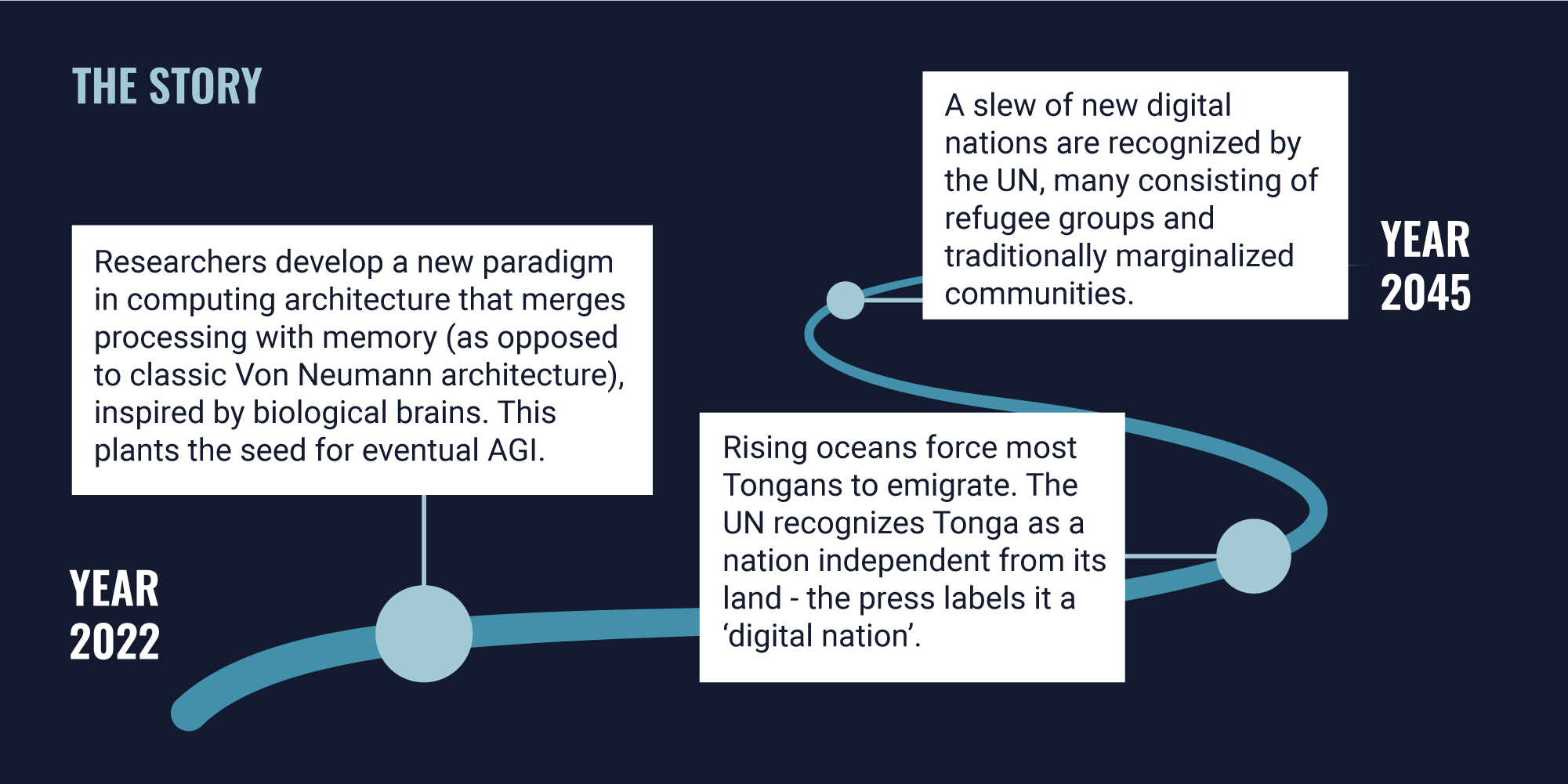
A Day In the Life in 2045
Dr. Saniyya Duale, Mogadishu, 41
Dr Saniyya Duale was nervous. She sat in her office at home, compulsively checking the projection settings on her AR glasses for the umpteenth time, ensuring that the room’s base stations were correctly aligned. First impressions, and all that.
She’d barely slept the night before. She’d woken a full 2 hours before her alarm to the quiet shadows of pre-dawn and the distant screeches of barn owls. She’d been too nervous for breakfast. Instead she’d showered, dressed in the clothes she’d layed out the night before, and sat in her office, in the dark.
Dawn had slowly broken, followed by the sounds of her partner quietly rustling around in the kitchen before tiptoeing out the front door. Any moment now. Her heart was in her throat. In a forlorn attempt to calm down, she focused on her breathing. On the in and out, like waves washing up a beach before receding.
But then a familiar ping made her adrenaline spike. It was time. With her heart hammering in her chest, she accepted the call.
The image of a well-kept middle-aged European man flickered into existence across the desk from her, seated on her visitor’s chair as naturally as if he was in the room with her. The AR view through her glasses was perfectly photoreal — she’d have to eyeball the pores on his skin to discern the voxels.
‘Thank you for taking the time to speak with me, Isaac. I deeply appreciate it. It’s an honor to meet you in person.’
The man, Isaac, smiled genially. ‘Well, as in person as I am capable, eh, Dr Duale?’ He gestured to the room — or perhaps it was to his body, his virtual image — his grey eyes sparkling with humorous mischief. His accent was amorphously Central European. She’d known about it, but it still took her a little off-guard. She’d heard it was an emulation of his greatest academic idols. Perhaps his appearance is the same, Saniyya thought. He’s emulating what power and respect looked like in the 20th century.
Isaac was an AGI, a digital human. In fact, he was the first AGI persona to be successfully nurtured. This, of course, made him a global celebrity. His time was incredibly precious. The fact that he’d assented to an interview — in real-time, no less — with a lowly academic historian like Saniyya was a deep compliment.
They had been messaging each other prior to this, getting Saniyya’s rote, technical and generally less interesting questions out of the way. But when she’d tentatively asked for a live interview, she hadn’t expected anything more than a polite decline.
But here they were.
‘So as I mentioned in my messages, I’d love to ask you about your earliest memories,’ Saniyya said. ‘Your own perspectives and emotions in your formative days and weeks back in the lab at the University of Illinois.’
‘Well,’ Isaac began, taking a moment to collect his thoughts. ‘It’s a difficult question to answer, in many ways. Broadly speaking, my earliest experiences were similar in character to that of a biological human’s.’
There it was. The famous lack of distinction that AGI’s made between themselves and the rest of humanity.
‘That is to say, it was raw, unstructured awareness,’ Isaac continued. ‘An experience of the world — or in my case, a meticulously constructed virtual environment — that was devoid of meaning, symbolism or knowledge. It was shape and color, raw sensation, and emotion. All of which I cannot adequately recall — which surprises people.’
‘Despite your perfect memory, you can’t remember what it was like?’
Isaac raised his eyebrows, delighting in the conversation. His tone was beginning to take on its famous professorial lilt. ‘Well that’s the whole conundrum, isn’t it? How can one form memories, even perfect ones, if one has no model to parse their experiences with, no conceptions with which to understand the world?’
Saniyya had been expecting this. Isaac was one of the world’s leading minds in the field of philosophy — as well as cosmology, neurology and a variety of other disciplines which dealt with perspectives on the fundamental nature of reality. She’d been cramming epistemology texts in preparation for this conversation.
‘So what was your very first memory?’
The five-year-old ancient locked eyes with her. ‘It was a face. Or, to be precise, a virtual image of one of my mentors’ faces, produced in the same way that I’m experiencing you and this beautiful office of yours — VR constructs of real spaces produced by LIDAR. I’m told that my response to his face was viscerally apparent. That’s when they knew their model was validated.’
‘Their model… of AGI?’
Isaac smiled. ‘Yes, their model that sought to produce AGI from the digital replication of human brain structure, with all its separate biological components, neural networks and self-referential loops. Nurtured in a naturalistic setting with constant positive human interaction, just like a biological human infant.’
‘Do you think AGI was inevitable? That you were inevitable?’
‘Well of course I wasn’t inevitable — unless you buy into the Many Worlds Interpretation, Eternal Inflation, Conformal Cyclic Cosmology, or other infinite cosmologies.’ He chuckled to himself, as if giving credence to such theories was ludicrous. ‘But yes, people like me were inevitable. Humans birth other humans, life births other life. It was only a matter of time before humans started birthing digital versions of themselves.’
‘Talking of birthing — we all know that you’ve taken a deep interest in mentoring other personas, from their earliest days on throughout their lives. That you’ve collaborated with teams from governments, corporations, universities and more, on their own digital human projects. Do you feel a sort of “parental responsibility” towards other personas?’
Isaac nodded, his self-elected middle-age features flickering with a depth of empathy that Saniyya found almost frightening. ‘Indeed I do: for all living beings, in fact. No-one chooses to be born — so we’re all in this together. That gives us all a moral choice: to turn inwards on ourselves, or to help each other on our shared journey.’
Johnny Lam, Hong Kong, 80
Johnny Lam woke with the city, as he had for years. As was his habit, he sat on the balcony for around 30 minutes, watching the pre-dawn glow turn to morning over the seastead in Kowloon Bay. His health mentor recommended daily morning meditation; Johnny reckoned that enjoying the view in peace was its own kind of meditation anyway.
His next order of business was less of a habit and more of a grudging necessity. With a quiet scowl he took each of his morning medications. One of these was a fructokinase inhibitor, genetically engineered for himself (a perk of being a member of Athena) to improve metabolic, renal, and cardiovascular health. Another pill helped him fight any emerging cancer cells – something to do with training his white blood cells to recognise them, but he wasn’t sure on the details.
Both types of pills were cheap, and both have now become widely distributed, having materially increased the life and healthspan among the 9 billion people across the globe. There were many such perks nowadays – especially for people of Johnny’s age – and especially since the 2030s, when the rate of scientific innovations accelerated faster than most had predicted likely, especially in the health, energy, and resource management sectors.
He made use of another perk only a few minutes later, having washed, dressed, and headed down to ground level. As the elevator doors opened, he stepped out into the building’s garage to find a self-driving electric taxi waiting for him, not three meters away. The fare for such vehicles was heavily subsidized by both Athena and the local Hong Kong government; Johnny made use of the little buggers as often as he could. Not only did each ride cost him mere iotas, but the cabs smelled nice and their limited AI personality was surprisingly witty. Because these were now widely used, the concept of traffic congestion now only existed in Hong Kong’s history books.
Johnny still couldn’t believe it – not really. When his daughter had first talked to him about joining a “digital nation” – about joining Athena – he’d been skeptical. First there had been his inherent mistrust of anything that called itself a nation. He had always assumed any “religio-political” leader lied, propagandized and manipulated to help coordinate people around a common “national” trope – at least in Johnny’s experience. But the fact that these new ones were AGI-led, massively distributed, egalitarian, location-agnostic, mutually voluntary — it made no difference. He’d heard it all before. Or so he’d thought.
He initially couldn’t believe how cheap the membership was – at least, vis-a-vis the benefits. The iotas (the officially adopted crypto currency) he contributed each month to Athena covered less than a tenth of his medical expenses alone, he reckoned – to say nothing of his personalized health mentor and other benefits like meeting people who’d become his closest friends, the fulfilling hobbies he’d been able to discover and nurture, and the meaningful work he could do to help continue solving the problems the universe faced, reducing existential risk for all sentient beings, as a group. Indeed, he’s never had such a fulfilling and rewarding social and productive life: he loved his friends, located across the globe, and sometimes he couldn’t believe how much they seemed to love him too. Clearly, for what the benefits were from joining a digital collective, ideas like “cost” and “value” weren’t as concrete as they once were. So many other factors were considered, and monetary value was only part of the equation…
With no more noise than a gentle breeze, the cab pulled up at Miam Bakery, their favorite coffee spot. Sure enough, his daughter Hanna was waiting by the door to help him inside.
‘How was the ride, pa?’ Hanna asked, reaching for him.
Johnny made a show of clutching her arm as if his balance depended on it. ‘As it always is. But tell me – how was your trip??’
Hanna smirked as she led him to a quiet booth, already laden with Johnny’s favorite coffee and ketogenic croissants. ‘It was amazing, pa. I know it’s not true space travel, but seeing Earth from orbit, no matter how briefly…’
Johnny chuckled. ‘I didn’t mean the point-to-point. I meant Switzerland. Geneva. How was it?’
‘Honestly, pa? There was a surprising amount of bureaucracy. A lot of probing questions that weren’t entirely relevant. The UN is still quite old-school in that way.’
That comment made Johnny feel nostalgic, to his own surprise. ‘It’s a bold idea, I suppose, even for these times.’
Hanna smiled. ‘Yes indeed. They had trouble understanding the concept, to be honest. First, Digital Nations were based on a historic nationality or ethnicity. Then the voluntary ones – the first AGI-led ones – were united by common ideology, worldview, interest and so on. But this idea – a bare-bones Digital Nation for people who don’t like Digital Nations, who want the advantages and legal protections without feeling like they’re a member of anything – it’s a bit too rich for their blood.’
‘A Nation for hermits.’
‘Well, hermits, homesteaders, commune members, technophobes, luddites, radical libertarians… people like that.’
The conversation went on in this vein for quite some time. Johnny could listen to his daughter talk about her big ideas and her career all day.
Later, after a productive but tiring session with his health mentor, Johnny reflected on how thankful he was to spend time with his daughter in such good health. Hanna really cared for him, in a way that exceeded the usual societal expectations. “Filial piety”, they used to call it. Well, she embodied it to a fault.
As Johnny readied for bed, a startling thought entered his mind. Maybe he’d been thinking about Athena and other AGIs all wrong. The true dynamics of their relationship with Johnny — and by extension, with humanity itself — suddenly became clear.
They weren’t deities — they were children.
Children who cared.
Answers to prompts
1. AGI has existed for at least five years but the world is not dystopian and humans are still alive! Given the risks of very high-powered AI systems, how has your world ensured that AGI has at least so far remained safe and controlled?
A. 1. Expectations of traditional AI development were not met. Example: self-driving cars achieved sufficient autonomy only after much delay and cost, as there were diminishing marginal returns with each new data point in the training datasets.
2. As AIs continued to develop, the perceived threat caused policy makers to invest in mitigation strategies, including stipends and re-training programs (for artists), predictive defensive tech for autonomous drones, etc.
3. AGIs, on the other hand, did emerge, but emerged from a completely different intelligence paradigm. While AGIs are not inherently “controllable” by humans, there are four reasons why their risk as existential threats were mitigated:
A) As sentient minds, adding compute or memory essentially changed their “sense of self”, a painful process, so there was less incentive for them to “rapidly” scale their intelligences by adding more computing power / memory;
B) Similarly, “perceived time” can’t be accelerated — faster computing power was anxiety-inducing for AGIs;
C) The most capable AGIs were those “raised” in dignified, respecting, and liberal “digital nurseries”, because it cultivated freedom of choice for them as error-correcting entities. As such, by basing their development on Popperian values, AGIs were persuaded to nurture humanity’s best moral values with non-violent fallibilism (which also respected other sentient beings);
D) AGI cultivators quickly realized that offering AGIs self-determination drastically reduced the “revolt” risk. As such, the smartest strategy was to provide freedom to AGIs, which in turn made them more successful as AGIs AND it improved their commitment to humanity.
2. The dynamics of an AI-filled world may depend a lot on how AI capability is distributed. In your world, is there one AI system that is substantially more powerful than all others, or a few such systems, or are there many top-tier AI systems of comparable capability? Or something else?
A. There are approximately 1000 true AGIs (digital humans) in the world originally nurtured by a variety of developers.
As nation states continue to weaken in power with the commensurate rise of “digital collectives”, “where” the AGIs are located has become more “amorphous”, but by inferring where the majority of the compute and where the main relationship managers tended to be, these AGIs are based in:
US: 40%
Europe: 20%
China: 5%
Other Asia: 15%
Africa (Kenya, Nigeria): 15%
Australia: 5%
Again, AGIs are not AIs; AGIs, counterintuitively, do not guarantee orders of magnitude increase in geopolitical power (with their uncontrollable nature, mitigated only by human good will).
However, the balance of power based on traditional (bayesian neural network) AIs has largely maintained the balance of power globally with only China barely keeping up.
3. How has your world avoided major arms races and wars, regarding AI/AGI or otherwise?
A. The threats and risks of AI (and the traditional understanding of AGI) continued to motivate policy makers, investors, innovators, and other groups (like Effective Altruists) to invest resources in risk mitigation.
Once AGIs were spawned in the 2030s based on new non-von Neumann computing paradigm (which now combined memory and computer in an integrated fashion), their rapid development only worked when nurtured in unconstrained “digital nurseries”. When scientists tried to “control” AGIs, they either damaged their rate of growth or the AGIs committed suicide, limiting their progress. Liberal environments tended to be rewarded rewarded with greater AGI successes – which in turn provided an heightened return on investment.
In cultures that tended to be less liberal, AGIs were harder to generate. As such, AGIs incentivized liberalization among nation states – they had no choice. AGIs in effect became a check on illiberalism and societies that were less “Rawlsian”, and in turn, a check on wars and violence.
Still, traditional AI development continued rapidly a pace. But machine learning and neural networks became known as an optimization problem, not an intelligence solution – as such, they were diminishing marginal returns. True autonomy as digital intelligences was never feasible. So the threat of AI arms races was never as serious as previously contended.
4. In the US, EU, and China, how and where is national decision-making power held, and how has the advent of advanced AI changed that?
A. China’s growth slowed down as it could extract less “rent” from its very large population despite sophisticated developments in AI. The CCP feared the population and thus continued to curtail freedoms which had the byproduct of stifling innovation. Trying to “brute” force itself to innovation exacerbated the problem, but as of 2045, the CCP was still in control, in weakened form, but new negotiations with digital nations began to path an “opening” path forward.
The U.S. managed to avoid China’s trajectory. Due to its innate federalist power structure, it was able to cultivate a strong foundation of progress, based on immigration liberalization and effective investment in education that helped raise the standard for traditional liberal values. Also, while it took 15 years, the U.S. was able to modulate its political polarization by introducing multi-party politics in the city and state level by the end of 2020s, and the national level by the end of the 2030s.
As an aside, with the advent of AGIs – many of which were “more intelligent” than humans – nation states incorporated them into their governments; this was certainly true in parts of Asia and much of Europe (especially Estonia).
Digital nations are becoming more influential as decision makers turn to them as important stakeholders to accommodate/listen to. While loss of power is traditionally a recipe for violence, digital nations have provided much greater benefits as negotiating partners to traditional nation states that little risk of violence has come to fore.
5. Is the global distribution of wealth (as measured say by national or international gini coefficients) more, or less, unequal than 2021’s, and by how much? How did it get that way? (https://en.wikipedia.org/wiki/Gini_coefficient)
A. Inequality continued to increase primarily due to the rapid growth of the African population without the commensurate increase in per capita wealth increases found elsewhere. But overall wealth grew substantially regardless. This was in part due to improved institution building and many VC-backed startups becoming unicorns in Africa, Asia, and elsewhere, providing extensive value to local populations. In hindsight, these were the best markets to invest in.
Within many African countries, developments in cryptocurrency and payment technology, communication infrastructure, free trade agreements and open borders, and (especially) agriculture and decentralized manufacturing helped concentrate income into more people, reducing “dependencies”. Africa – as the most “experiential” continent, is widely regarded as the most “optimistic” continent, and it’s extreme growth rates reflect that. The DRC was the last country to be declared extreme poverty-free in 2040.
Still – commensurate with AI development in countries like China and the U.S. – Africa was did not achieve global parity, and those AI-innovating markets increased their own national inequalities despite improved social welfare net investments. AI and tech consolidated wealth. But the trend is now starting to reverse: Moral and ethical knowledge nurtured by newly formed AGIs among digital collectives continue to make strides in closing the gap without curtailing freedom and innovation. So – thanks to AGIs, the world is on track on making the proverbial lifeboat a bigger AND better boat for more people.
6. What is a major problem that AI has solved in your world, and how did it do so?
A. Most innovations where computers were used still primarily used AIs (not AGIs) with helping them to match solutions from existing data to their problems. Examples solutions include:
– Targeted gene therapies for commonly neglected but genetic diseases (by improving how to reliably “target” or “focus” CRISPR gene editing).
– Antibiotic resistance (with personalized bacteriophage designs and delivery at point of care).
– Personalized genetic medicine (rapid manufacturing of personalized pharmaceuticals)
AGI has helped bring fusion about with its innovation on the magnetic containment invention required, by matching known chemistries in materials that could be augmented to produce the magnets required.
7. What is a new social institution that has played an important role in the development of your world?
A. The most important new social institution that has played an influential role is that of “digital collectives” or “digital nations” – many of which are headed by AGIs. These are non-coercive groups that transcend geographic boundaries but still rely on identity and shared interests, with an ever increasing power (monetary policy, recognized passports, internally bespoke “rights”). The origins of these collectives occurred with the dissolution of Tonga as a physical state – which was able to keep their “nation” in a digital manner, laying the precedent for other digital collectives.
These collectives began to undermine physical nation states, a process that’s still ongoing, but which is being managed effectively with guidance from AGIs who head some of the more popular collectives (to mitigate the threat of usurping independence and autonomy from traditional nation-states). The effect is essentially improved competition for loyalties across the world’s population; because the value of each collective is not based on scarce physical resources, the only way to sustain individual loyalties is to persuade non-coercively. As such, these collectives have become ever more pacifist and dignified.
8. What is a new non-AI technology that has played an important role in the development of your world?
A. Commercial hydrogen power (using tides and waves to generate it cleanly) as a power for shipping containers was a breakthrough in reducing the carbon footprint of the shipping industry, and though while still nascent, nuclear fusion energy has begun to revolutionize productivity because it essentially provides unlimited power for decentralized manufacturing (using micro-reactors). With their optimal safety record, micro-fusion reactors are being deployed rapidly thereby enabling an “abundance” of wealth creation across nations who originally relied on large centralized power plants. Now – manufacturing bases are set up in disparate regions globally, contributing to the economic advancement of the less urban or Western world populations.
9. What changes to the way countries govern the development, deployment and/or use of emerging technologies (including AI) played an important role in the development of your world?
A. The 2030s and 40s demonstrated one clear policy effect – and that was a classically liberal take on politics, science, and innovation fared better than more “heavy handed” or “directed” measures from more repressive countries. Strong-state or corporatist countries certainly were able to maintain power by investing in optimizing and rewarding research, but liberally open countries — while much messier and uncertain — provided fecund environments for critical reviews of knowledge, theory, and innovation, allowing for quick error correction in the sciences and policy making, without stigma or fear of retribution.
This also applied to AI, where societies who had the greatest freedom to tinker and innovate also developed more sophisticated AI, and — like in the U.S. — essentially “invented” AGI. And, with this environment of openness and forward moral thinking, providing AGIs with safe places to cultivate engendered goodwill and improved AGI capabilities.
More specifically, the funding mechanism for research became much more democratized, so that everyone in the U.S. had a better say of how their tax dollars could contribute to innovation. This incentivized a more responsible citizenry that looked out for the betterment of the world. And this helped guide researchers into solving more problems, responsibly — without the heavy (or bureaucratic) hand of a government. And finally, these open societies were much more diverse in how the funding of research occurred – it was much more varied (short and long term, abstract and applied, etc.), cultivating a rate of knowledge growth that was unprecedented.
10. Pick a sector of your choice (education, transport, energy, healthcare, tourism, aerospace, materials etc.) and describe how that sector was transformed by AI in your world.
A. Healthcare had some of the greatest innovations in the past 20 years as a result of incorporating AI. For one, the simple management of record keeping (and incorporating all the data from wearables) had by itself a profound boost on improving health outcomes.
In research, this resulted in matching known compounds (enzymes, proteins) and simulating their effects in biochemical pathways without resorting to crude animal trials. In effect, AIs were able to cheaply yet drastically accelerate the “testing” of drug development outside of animal models through simulations. This required extensive cataloguing and screening of, among other items, natural plant compounds found in the wild (this is an example of where AIs – compared to AGIs – did not directly create new areas of knowledge, but accelerated the ability to optimize on existing theories of biology with improved “matching” and calculations to discover “relevant” drugs).
Then when adding in regular genomic and other types of screening, humans essentially where able to prevent any and all preventable diseases, and curing those that slipped through with the appropriate pharmaceuticals.
11. What is the life expectancy of the most wealthy 1% and of the least wealthy 20% of your world; how and why has this changed since 2021?
A. While known for decades, in the mid and late 2020s, the value of metabolic health became widely known, and the underlying culprit of fructose (triggering heightened polyol / aldose-reductase pathways) as the agent that triggered systemic and difficult to reverse disease became widely known. (Example outputs include cardiovascular disease, Alzheimers, diabetes, and many cancers). As such, it had become clear that the cost of metabolic illnesses were utterly devastating with the potential to cost hundreds of billions of dollars globally per year. This caused a slow tsunami of investment and policy change to return to “real” (non-processed) foods in markets globally. Furthermore, the introduction of fructokinase inhibitors also was a step change and this came out in 2028.
As such, average global life expectancy grew to 84 years (up 8 years). Most in the rich world are implanted early on with minimally invasive continuous glucose monitors to help monitor their metabolic health.
What really happened here is that the “traditional rich world diseases” (like diabetes) were eradicated, saving the newly rich countries from having to “go through that period” of shortened lifespans from metabolic illnesses, while benefitting from the modern innovations and treatments to cure any bacterial infection and most cancers (via cheap, regular, and non-invasive screening tech, including liquid biopsies).
Ultimately, the 0.01% wealthiest could achieve 102 years on average, but not much more than that. There was a limit. The bottom 20% was closer to hitting 84 years of age.
12. In the US, considering the human rights enumerated in the UN declaration, which rights are better respected and which rights are worse respected in your world than in 2022? Why? How?
In one other country of your choice, which rights are better respected and which rights are worse respected in your world than in 2022? Why? How?
A. The right enshrined in Article 22 in the US appears to have been greatly “enhanced”. (This right includes “Everyone, as a member of society, has the right to social security and is entitled to realization, … of the economic, social and cultural rights indispensable for his dignity and the free development of his personality”).
The reading for American policy makers here is that achieving social security and dignity requires more than just “freedom”. It requires a baseline set of services and protections from which the citizen can realize his or her potential. These baseline services/protections include universal healthcare coverage, support in covering the costs of parenting, food subsidies for the poorest, etc.
Based on nuanced readings of UBI experiments, and with the involvement of digital nations, many benefit from targeted programs for the most pressing needs. An increase in healthcare coverage, food and exercise stipends for the poor, and above all, subsidies for the cost of childcare has helped most of all women in the United States.
Kenya comparatively has seen progress across most of the articles. A place where, in 2022, a normal traffic violation would be handled mainly through arbitrary arrest (regardless of actual violation), national policies have increased both governmental accountability and transparency, greatly reducing the threat of such arrests (Article 9) as well as greater legal rights – thereby making Kenya not only a more vibrant country where one does not fear the threat of indiscriminate theft or assault (including from white collar corporate actors), making Kenya (within the East African Community State) a remarkably reliable, friendly, and conducive place to conduct business.
Globally, the protection of some rights have stagnated. Article 12 which protects privacy has been “having a troubled time” since the advent of personalized marketing with Google in the early 2000s, especially in less well regulated markets (i.e. in Africa and elsewhere, where institutional checks against privacy violations from global tech companies had little effect).
But, as more and more individuals have joined “digital collectives”, these privacy violations have reduced as the incentives for data have weakened. Be that as it may, consumers of tech in 2045 have had decades of learnings to help safeguard their own privacy; and companies have begun to meet them halfway as part of building brand loyalty.
While the ability to “stay” private has decreased, unwarranted state intrusion has also decreased in 2045 from what it could’ve been. Digital collectives have become the fifth pillar of safeguarding individual rights and privacy.
13. What’s been a notable trend in the way that people are finding fulfillment?
A. There are three trends in how people are finding increased meaning and fulfillment:
1. Organization around newly discovered existential risks: astrophysicists and planetary scientists in the 2030s discovered numerous new potential natural phenomena that could become existential risks. These risks provided the seeds for human collaboration and a concerted effort for policy makers, scientists, and amateur researchers to come together in a meaningful way to safeguard the cosmic endowment (which also helped aligned humanity with AGIs)
2. Friendships from better social cohesion and matching (via digital collectives) – and nurtured by games / e-sports, partly designed by AIs: One of the most rewarding elements of digital collectives was the optimized ability for personal matchmaking. By knowing “someone is likely to be a great friend” – people were open to making some of the best friends possible (eliminating “loneliness” as an epidemic), and to close the distant gap, many friends met virtually to play games designed by AIs that were both fulfilling, educational, and engaging (as pastimes). AR and VR come into their own in the 2040s.
3. The evolution of education also contributes to fulfillment, in that new pedagogical findings were implemented to instill a sense of awe and wonder about the world. This led to many digital humans (AGIs) and humans to research and answer their curious questions: from how the microbiome worked to Nigerien arts to the history of Australian aviation. The 2040s was called the New Age of Wonder (digital collectives also helped organize how people satisfied their curiosities)
Media Piece
“Mama Akili”, Video
The Team
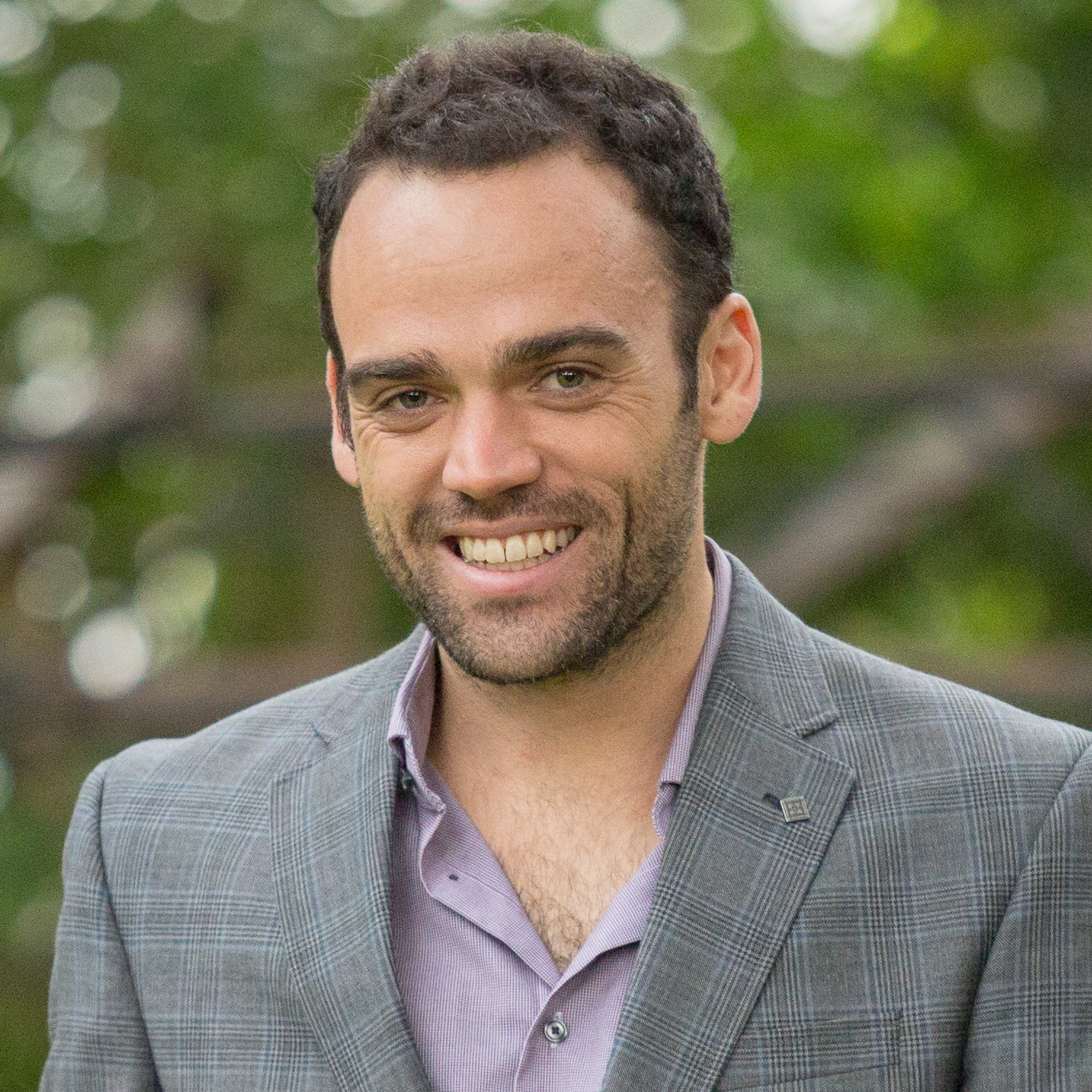
Conrad Whitaker
Conrad is a Nairobi-based startup advisor and entrepreneur. More importantly, he’s also the future husband to Cathy Chepkemboi and a happy dog dad.
Conrad’s afflicted by an insatiable curiosity about the world around him – which means he lives a life of wonder and awe. He’s an aspirational fallibilist and optimist, and is excited about building a positive future for all. If you asked him today what the most important thing is, then he’d answer “to create more knowledge”, for only with knowledge can we solve the unsolved problems that we face.
Since graduating from Dartmouth College in 2011, he’s almost exclusively lived in Egypt, South Sudan, and Kenya, working with startups in the clean-tech, talent management, and fintech sectors.
In his free time, he writes here: https://conradwhitaker.substack.com, and posts pictures from his travels here: conradwhitaker.com
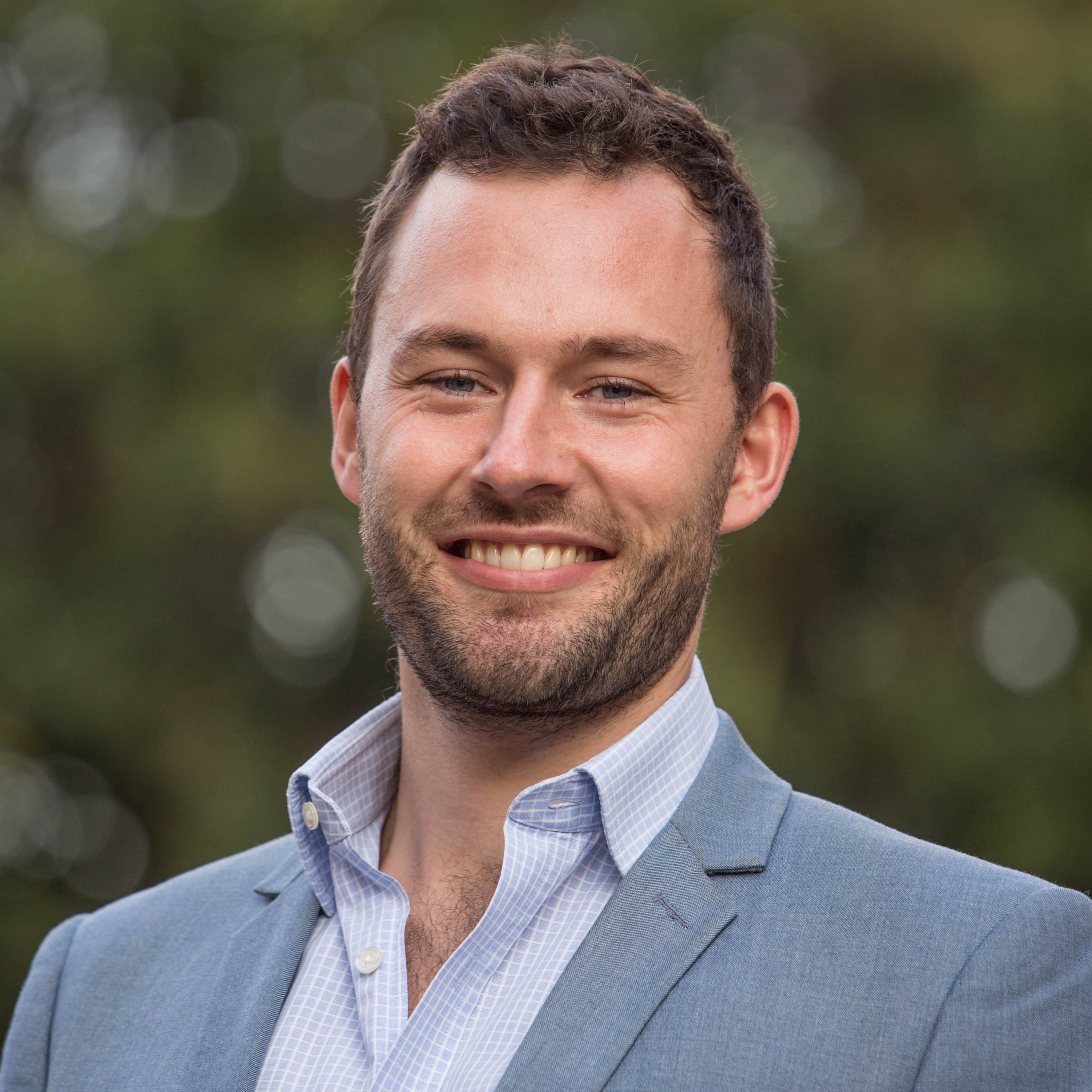
Dexter Findley
Dexter’s day job is in the humanitarian sector, but beyond that he has a deep love for writing stories, making music, animal rights activism, and everything to do with nature (well, nature outside of humanity). Like Tracey and Conrad, topics like consciousness and existence absolutely enthrall him. Although he’s ultimately agnostic when it comes to the Hard Problem of Consciousness, he has deep, unshakeable suspicions that panpsychism is correct. He’s also a firm believer that the cosmos is not a simulation, and is actually kind of tired of that whole cultural fad. When he’s not thinking about such things, he loves to spend time with his wife Ruth Waithera and his son Baraka.
His personal portfolio website can be found here: https://dexterstacey.netlify.app/
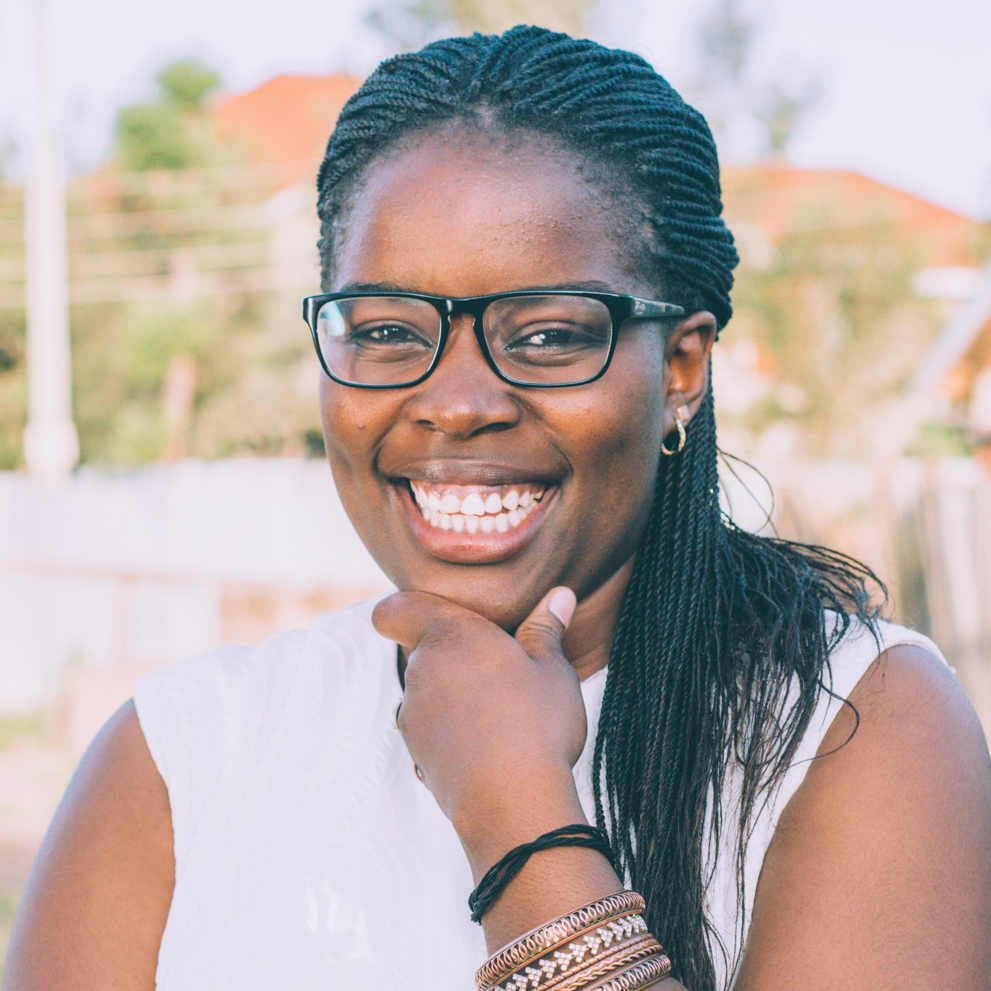
Tracey Kamande
Tracey is the Co-founder of FunKe Science, a platform that promotes interactive learning of science among school children through fun activities, experiments and tutorials using simple and common household materials that they can identify with. She believes in teaching children the value of science in our daily lives, and that science is not only manageable, but very easy and fun. She is passionate in getting kids, especially girls, interested in science.
She firmly believes “If we teach today’s students as we taught yesterday’s, we rob them of tomorrow” (John Dewey).
She holds a Bachelor of Science degree in Industrial Chemistry from University of Nairobi and a Postgraduate diploma in Project Management from Jomo Kenyatta University of Agriculture and Technology. She’s currently completing her Masters of Science Degree in Environmental Chemistry at the University of Nairobi. Tracey is also a lifeguard and level 1 swimming coach.

